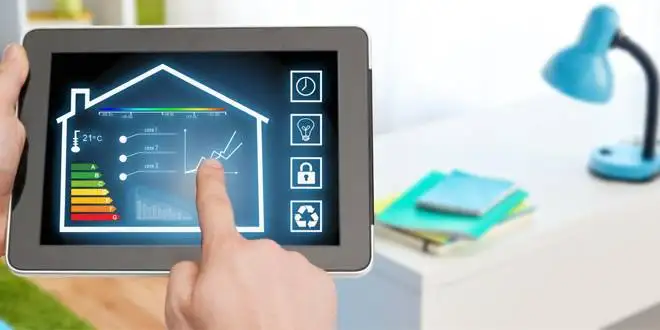Air Conditioning Air Temperature Chart: Find Your Ideal Comfort Zone

Summer’s on its way (or maybe it’s already here!), and battling the heat is a top priority. But blasting your air conditioner all day isn’t exactly ideal for your comfort or your wallet. This post will help you find your personal sweet spot with an Air Conditioning Air Temperature Chart and tips to create the perfect climate control zone for you. You’ll be feeling cool and comfortable without breaking the bank on your energy bills.
What is an Air Conditioning Air Temperature Chart?
An air conditioning air temperature chart is a visual tool designed to help you understand the relationship between air temperature and human comfort. It takes into account various factors, including humidity levels and personal preferences, to suggest optimal air temperatures for your air conditioning system. This chart is particularly useful for fine-tuning your HVAC system to achieve a balance between maintaining a comfortable indoor environment and controlling energy consumption.
Why is it Important?
The significance of this chart lies in its ability to guide you in setting your air conditioning system to a temperature that ensures comfort without unnecessarily high energy bills. It’s a step towards energy efficiency and environmental responsibility, helping you to reduce your carbon footprint while enjoying the comforts of a well-regulated indoor climate.
The Chart Itself
Below is an example of an air conditioning air temperature chart. This table represents a range of temperatures and their corresponding comfort levels, taking into account the average preferences of individuals in a residential or commercial setting.
| Temperature (°F) | Comfort Level |
| Below 68 | Too Cool |
| 68-72 | Comfortably Cool |
| 73-79 | Comfortable |
| 80-84 | Slightly Warm |
| Above 84 | Too Warm |
How to Use the Chart
- Identify Your Preference: Start by determining your personal or your family’s comfort preference during different times of the day or year.
- Adjust Accordingly: Use the chart as a guideline to set your thermostat. For instance, if you find 73-79°F comfortable, aim to keep your indoor temperature within this range.
- Consider Humidity: Remember, humidity levels can affect comfort. Even if the temperature is within your comfort zone, high humidity can make it feel warmer. Consider using a dehumidifier or adjusting your AC settings to manage humidity.
- Energy Savings: Opting for temperatures on the cooler end of your comfort zone during winter and the warmer end during summer can lead to significant energy savings.
At Blue Air One Heating & Air Conditioning, we believe that an informed customer is a happy customer. By understanding and utilizing an air conditioning air temperature chart, you’re taking a proactive step towards enhancing your comfort and optimizing your HVAC system’s efficiency. If you have any questions about adjusting your air conditioning settings or require a maintenance check to ensure your system operates at peak efficiency, feel free to contact us.
Adjusting Your Air Conditioning Settings for Maximum Comfort
Achieving the perfect balance between comfort and efficiency in your home or office doesn’t have to be a guessing game. With the insights gained from the air conditioning air temperature chart, you’re well-equipped to make adjustments that cater to your personal comfort while being mindful of energy consumption. Here’s how you can use the chart to fine-tune your air conditioning settings for maximum comfort.
Tailor Your Settings to the Season
☀️ Summer Months: During the warmer months, aim for the higher end of your comfort zone. Setting your thermostat to around 78°F when you’re at home and increasing it when you’re away can lead to substantial energy savings without sacrificing comfort.
❄️ Winter Months: In cooler seasons, setting your thermostat to the lower end of your comfort zone, such as 68°F, while you’re awake and lowering it further while asleep or away can help maintain comfort and reduce energy costs.
Adjust for Day and Night
🌞 Daytime: If your home or office tends to get warmer as the day progresses, especially in summer, adjust your thermostat a few degrees higher than your ideal comfort level to prevent air conditioners from overworking.
🌙 Nighttime: As temperatures drop at night, consider adjusting your thermostat settings accordingly. A cooler environment is often more conducive to sleep, so setting your thermostat to the lower end of your comfort zone can enhance sleep quality.
Consider Your Space’s Unique Needs
🏠 Room Usage: Rooms that are used more frequently may need to be kept at different temperatures than those that are seldom used. Utilizing zoning systems or programmable thermostats can help manage different temperature needs efficiently.
🌳🏡 Sun Exposure and Insulation: Rooms with significant sun exposure may warm up more quickly than others. Adjust your AC settings to account for this, and consider using curtains or blinds to minimize heat gain. Similarly, well-insulated spaces may retain heat or cool air more effectively, allowing for more moderate thermostat settings.
Stay Proactive with Maintenance
Regular maintenance of your HVAC system is crucial to ensure it runs efficiently and effectively. A well-maintained system can respond better to thermostat adjustments, providing optimal comfort and energy efficiency. At Blue Air One Heating & Air Conditioning, we offer comprehensive maintenance services to keep your system in top condition, ensuring that your adjustments yield the desired comfort levels.
Embrace Your Ideal Climate 🌡️✨
Elevate your comfort and efficiency today with Blue Air One Heating & Air Conditioning. From expert maintenance to tailored climate solutions, we’re here to guide you to your perfect comfort zone. Schedule your appointment now and experience the unparalleled service that makes us the trusted choice in HVAC. Your ideal environment awaits – let’s create it together! 🏡💼



